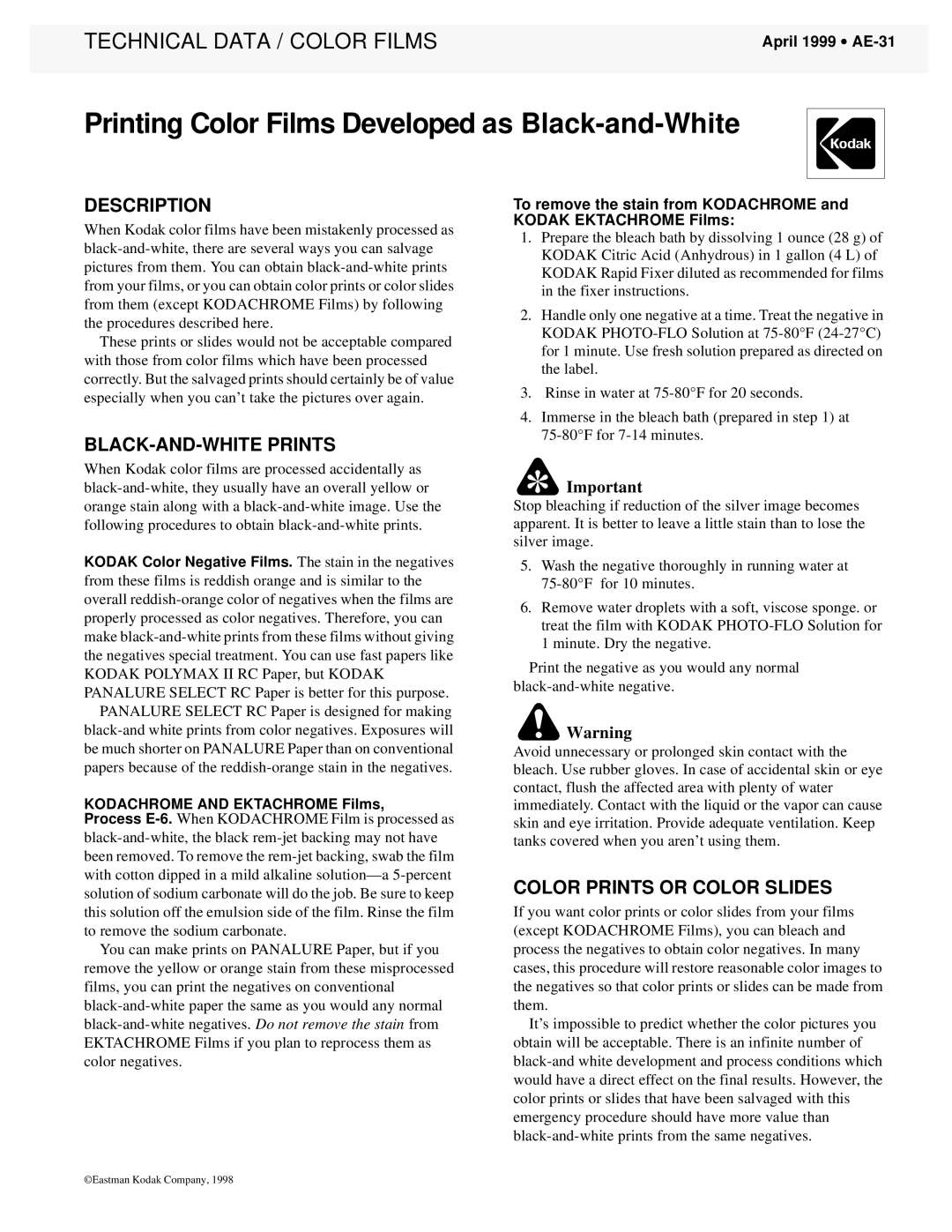AE-31 specifications
The Kodak AE-31 is a compact and innovative 35mm film camera that represents a significant milestone in Kodak's long-standing tradition of photographic excellence. Launched in the mid-1990s, the AE-31 was designed to cater to amateur photographers looking for an easy-to-use yet versatile camera. This camera combines simplicity with advanced features that enhance the user’s photographic experience.One of the standout features of the Kodak AE-31 is its fully automatic exposure system. This innovative technology takes the guesswork out of photography by automatically adjusting the aperture and shutter speed, ensuring that the user consistently captures well-exposed images even in varying light conditions. The camera's built-in flash further enhances flexibility, allowing users to take stunning photos in low-light environments.
The Kodak AE-31 is equipped with a quality lens featuring a 38mm focal length, ideal for a wide range of photography styles, from landscapes to portraits. The lens incorporates a multicoating that reduces flare and ghosting, enhancing overall image quality. With a maximum aperture of f/11, the camera offers ample depth of field, making it suitable for capturing sharp details in diverse scenarios.
Ergonomics play a crucial role in the AE-31's design. Its lightweight body and comfortable grip make it easy to hold and operate, even during extended shooting sessions. The camera also features an LCD display that provides essential information such as battery life and exposure settings, allowing photographers to stay informed while focusing on their subjects.
Another notable characteristic of the Kodak AE-31 is its ability to shoot in various modes, including a self-timer function, which is perfect for selfies or group photos. The camera also supports multiple exposures, allowing users to experiment creatively with overlapping images.
In terms of durability, the Kodak AE-31 is built to withstand the rigors of everyday use. Its robust construction ensures that it can handle the occasional bumps and drops that come with outdoor photography.
Overall, the Kodak AE-31 exemplifies the brand's commitment to quality and innovation. With its blend of automatic features, user-friendly design, and robust performance, it serves as a perfect entry point for novices seeking to explore the world of film photography while providing enough flexibility to satisfy more experienced users. The Kodak AE-31 remains a beloved choice for those passionate about capturing their moments in timeless film.

